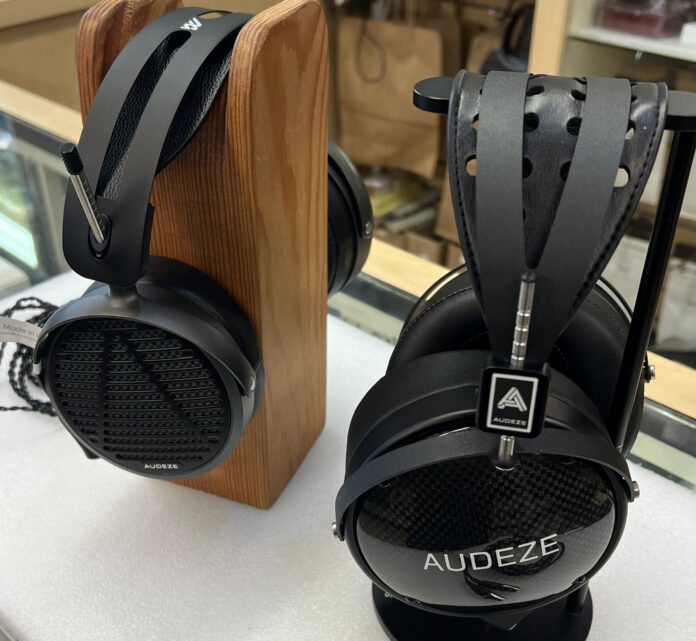Audeze MM-500 vs. LCD-XC Comparison Review
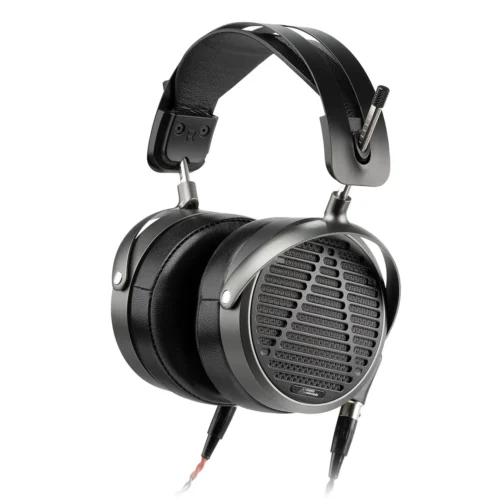
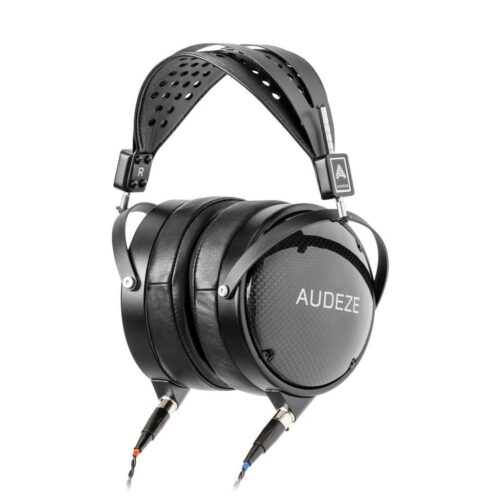
Audio professionals all typically use headphones in order to nail their mixes with clarity and precision. There is no hard and fast rule about what the ideal headphone or monitor speaker to work with is. I always feel as though the best equipment to use when making music is what you feel comfortable with and what sounds best to your ears. 2 great high-end choices are the MM-500 and LCD-XC. Closely priced, I thought that listeners looking at both options may have wanted MM-500 and LCD-XC comparison review.
The Audezee MM-500 and LCD-XC are both reference style headphones that share a lot in common but also each have a distinct timbre. In my mind, making this a debate between closed and open back would be a mischaracterization of each of their unique voices. For this reason, I want to demonstrate the nuanced details of each pair of headphones and hopefully dismiss some preconceptions people may have when looking at these 2 great listening devices.
What’s in the Box?
MM-500 Headphone ($1,699)1.9m Single-ended 1/4” to dual 4-pin mini-XLR cableEconomy Travel CaseCertificate of Authenticity and Warranty Cards |
LCD-XC planar magnetic headphone ($1,299)1.9m Single-ended 1/4” to dual 4-pin mini-XLR cableEconomy travel caseCertificate of Authenticity and Warranty Cards |
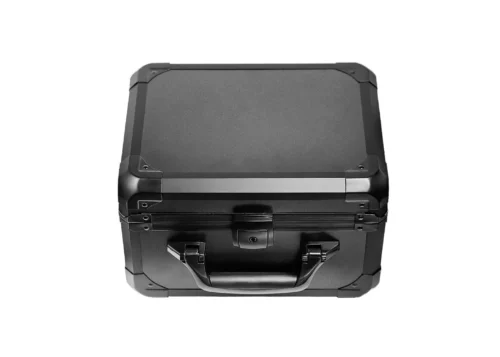
Look and Feel
In the MM-500 and LCD-XC comparison, the first distinction is the substantially heavier feel of the LCD-XC. Weighing in at 677g compared to the MM-500’s 495g, the orientation on your head is noticeably different. The ear pads on the MM-500 feel distinctly firmer on your head. It seems to me that the extra weight of the LCD-XC press on the side of one’s ears. My ears did feel more comfortable wearing them and I enjoyed the pillowy pressure from the weight of the headphones. Their softer ear pads compress and expand with your movement and are an added benefit when sitting behind a mixing desk for long periods of time. That being said, the MM-500 is far from uncomfortable. They feel distinctly light for a large headphone and sit on the ear comfortably. Users should try both out for themselves in order to find the best fit with their head shape.
In terms of looks, people will have a plethora of opinions on what’s more visually appealing. The LCD-XC has a more vibrant look. A carbon fiber back with branding on it pops out from the black background. I wouldn’t call these flashy looking headphones, but nuances like the retro style headband and carbon fiber make these look like an expensive pair of cans. The MM-500 definitely takes a simpler approach in terms of looks. The open backs leave little room for branding, making these look sleek and refined. My eyes gravitate towards them more due to the understated appearance.
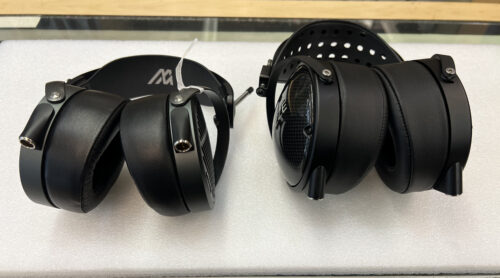

Design
Both of these headphones utilize neodymium planar magnetic transducers. The arrangement in the MM-500 utilizes a trademarked “Fluxor” magnet array, while the LCD-XC has its own proprietary magnet array. Audeze explains that their “Fluxor” magnet array creates a stronger magnetic field while utilizing less space. This means that the MM-500 is hypothetically more efficient to power than the LCD-XC and is the main reason they are smaller. At 20 ohms and 18 ohms for the LCD-XC and MM-500 respectively, these are both relatively sensitive headphones considering their use of power demanding planar magnets. The ¼ inch cable connected to stereo mini XLRs seems to be the same for both models. Neither cable had any discernible background noise and were very high quality. In my opinion, the tech borrowed from more expensive LCD-5 gives the MM-500 a better design, but the LCD-XC is not far behind.
Soundstage
Users who have tested headphones from other companies back to back like the Beyerdynamic DT770 Pro and DT990 will understand the differences between open and closed back headphones. People working in noisy environments like live sound engineers utilize these in order to get clear mixes regardless of audience noise. When compared to the MM-500, the LCD-XC’s shallower soundstage is apparent. The stereo image is more responsive and it did feel like more sound was coming out of each separate driver. Songs like “Holding On” by Sally Dige sound seperated. Stereo reverb effects on the synths shift sound from one ear to the other musically. The LCD-XC has a 106mm transducer compared to the MM-500’s 90mm size. This was apparent in the verticality of the noise. Sounds felt more holographic on the LCD-XC than the MM-500.
By comparison, the MM-500 has a wide soundstage and is still holographic and multidimensional. Sounds with characteristic reverb and delay have a beautiful trailing effect that runs away from one’s ears. Listening to “Everything is Fine” by Void Vision was an immersive experience that sounded like I was listening on large monitors. Enthusiasts who listen to ambient, shoe-gaze, worship, and black metal will love the MM-500’s expansive and clear interaction with time based effects. That being said, plenty of people may choose the closer sound of the LCD-XC. Live sound and mastering engineers could sway towards better noise cancellation and precise stereo imaging. What’s more important than soundstage width in these applications is exacting stereo image. I’d have to choose the MM-500’s soundstage over the LCD-XC. It’s easier to dial in reverb depth with my ears on them. Listening back created a landscape and color that was very pleasurable.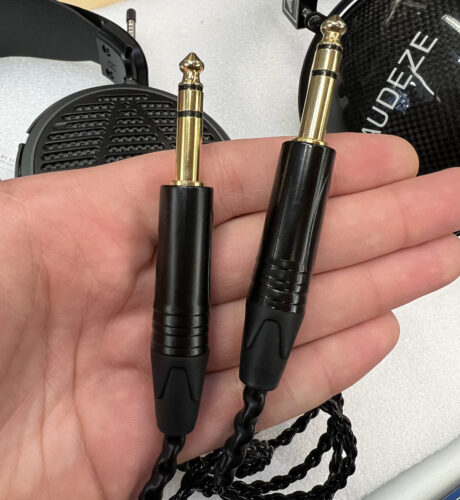
MM-500 and LCD-XC Listening Comparison
Lows
The flat frequency response of the MM-500 in the bass range gives these headphones a strong low characteristic. Their bassiness is exacting and precise without sounding muddy and dull. Jazz music with a warm bass tone has a round quality. At the same time, more harmonically saturated kicks, bass guitar, and synths in electronic and extreme music thump in the way that audiophiles love, pushing the transducers with grittiness. There’s a lot to be excited about in their frequency response, due to how exacting warm and dirty bass tones get. There’s a faithful recreation of sounds without many changes to how the music is mixed in the low end. To my ears, there’s a perfect amount of low end character in these headphones.
Audeze takes a different approach in tuning the LCD-XC which accentuates sub bass and high bass frequencies. Fans of Audeze’s sound signature will recognize this character from older models. Although not as perceptibly loud, I did notice that bass boosted music was recreated comfortably and made listening enjoyable. Another noticeable difference was in how fatiguing or not listening to this frequency was. Hours of testing led me to conclude that although I preferred the low end sound from the MM-500, the bass in the LCD-XC was less demanding on my ears. Audeze’s sound signature made EQing bass and 808s not as stringent, but the headphones did add some slight coloring to the mix. Bassheads will be able to enjoy music at comfortable volumes reliably without their ears feeling washed out. With that said, I prefer the flatter low end in the MM-500 because of the faithful recreation that it provides.
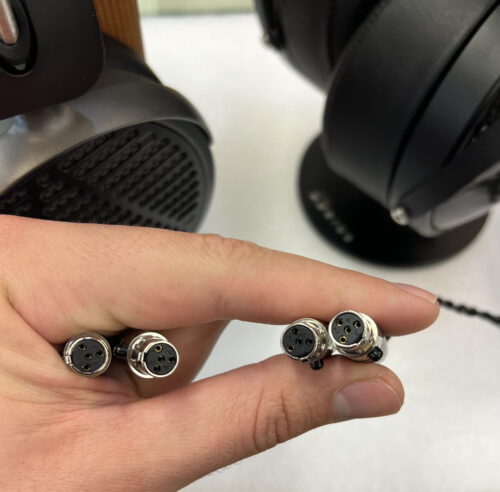
Mids
Mids in the MM-500 aren’t necessarily the main focus of the sound signature, but do a great job of settling music that can at times have too much mid-voiced information. A lot of instruments in mixes have to compete with vocals that sit in the same register. The clarity of the MM-500 in the midrange gives songs like “Roses” by Valencia Grace a transparent timbre. Vocals, synth PAD, and overdriven guitar all coexist in their harmonic space comfortably. The frequency response is relatively flat with a slight bump between 2kHz and 4kHz. My ears noticed the perfect blend of richness, sustain, and percussiveness in this sound signature.
Unlike the MM-500, the LCD-XC brings a more vibrant quality to the mids. Rock, jazz, and singer songwriter music sounds fuller. Because of the perceptively higher volume between 1kHz and 3kHz, music comes out with more detail than the MM-500. Double tracked guitars and harmonies are sustained and bountiful. Listening to “Witness” by Sour Widows highlights the layered guitar work on this track and the luscious mid focus on the LCD-XC. Vocals in my ears take up more room in the mix, and clean pop vocals have the glassy clarity that many listeners may be looking for. That being said, my preference for a more understated midrange makes me gravitate towards the MM-500. To my taste, a lower midrange gives room for lows to push and for treble to breath. Listeners who seek out vocals, guitars, and keys from their music will most likely prefer the LCD-XC.
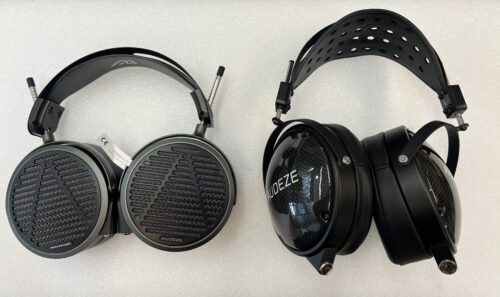
Highs
Audiophiles looking for exacting highs will instantly be drawn to the LCD-XC. Treble on the LCD-XC is tasteful but bright. The strike of cymbals, strings, and higher pitched synths all ring freely without sibilance. Some very bright headphones can overpower music and mixes, but the Audeze sound signature seems to have some surgical EQ on it. To my ears, the high character makes listening to treble heavy music easy by cutting certain ubiquitous nastier frequencies in the highs. It’s clear that Audeze’s approach gives the LCD-XC a decent amount of brightness which enhances the rest of the mix, unlike some other treble focused headphones that can color over other sounds.
The MM-500 to my ears would clearly be characterized as a bright pair of headphones. While not the brightest I’ve ever heard, the focus is clearly in the bass and treble parts of the frequency response. The relatively flat lows and mids start shifting in this range, and provide a similar characteristic to the LCD-XC. The MMs are definitely brighter than the LCD-XC and to me had a more faithful recreation of treble frequencies when comparing them to my monitors. This means that harsher treble frequencies came through, which makes sense considering their intended use. As a listener who can be sensitive to highs and sibilance, my ears felt protected by the LCD-XC’s extensive tuning. I typically prefer a flatter frequency response for mixing, but the way that Audeze EQ’d the LCD-XC enhanced the sounds of highs in a brilliant way.

Summary
The goal of most comparison reviews is to pick a winner between 2 items and give the specific reasons why the writer would make their selection. Although I will do this, it’s clear that the Audeze MM-500 and LCD-XC both excel in certain characteristics. That being said, I would prefer the MM-500s in this head to head. The flat lows and wide soundscape make them excellent for mixing and listening. With that in mind, The tuned highs, comfort, and precise stereo imaging are all features that make the LCD-XC a great pair of headphones. It was a difficult task picking a favorite, and I’m sure anyone who’s able to try both out side by side will agree. I can’t say one is better than the other, because they’re clearly nuanced headphones which shine in different situations.
The Audeze MM-500 is available at Audio46
The Audeze LCD-XC is also available at Audio46
Compare the ranking of various headphones, earbuds and in-ear monitors using our tools.
Discuss this, and much more, over on our forum.
---MAJORHIFI may receive commissions from retail offers.


